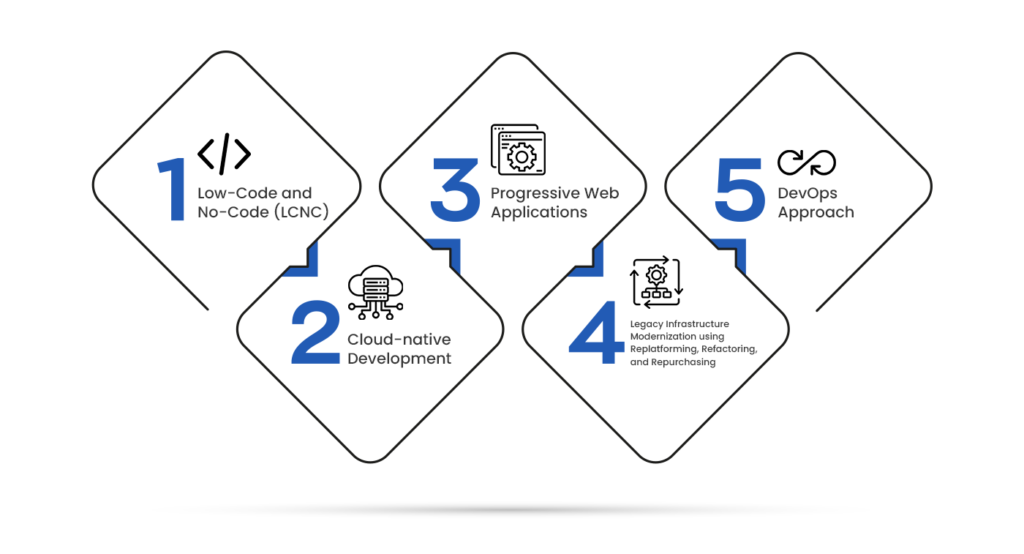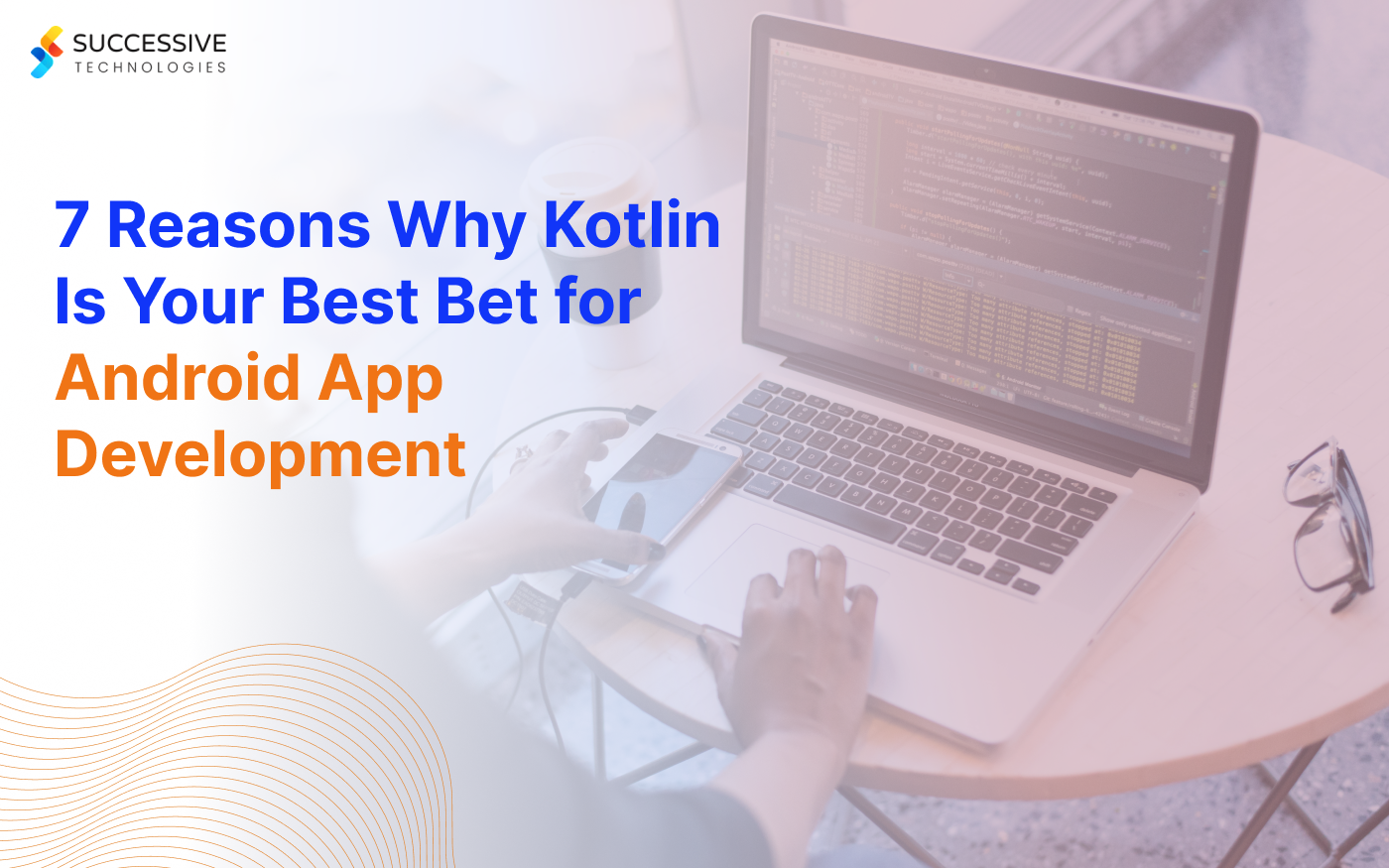In today’s evolving digital marketplace, Application modernization is one of the important disruptive technologies that provide future-proof advanced applications. To drive innovation and maximize the benefits of cloud adoption, businesses must prioritize application modernization. Modernization is an essential process giving new opportunities for organizations to stay ahead of the competition and help them make real-time decisions. It’s easy to respond to market needs faster with application modernization since its benefits, such as increased agility, scalability, security, and optimized processes, provide a new competitive advantage. Organizations embrace transformative business processes and achieve sustained growth with modernization initiatives. Nowadays, application modernization services are gaining momentum due to growing budgets for upgrading existing enterprise applications.
According to the report shared by Market Research Future (MRFR), the Application modernization service market is estimated to reach $ 24.8 billion by 2030, growing at a 16.8% CAGR from 2022 to 2030.
An Overview about Application Modernization
Application modernization is a process that involves updating existing software applications by leveraging newer languages, tools, frameworks, and infrastructure platforms to meet the evolving demands of businesses. This process is sometimes referred to as legacy modernization or legacy application modernization. In today’s rapidly advancing technological landscape, organizations often find themselves burdened with outdated legacy applications that hinder their agility, efficiency, and innovation. However, these challenges can be overcome by adopting a robust application modernization services.
Organizations can reap significant benefits from their modernization efforts by reducing the IT resources required to run an application, enhancing the reliability and frequency of deployments, and improving uptime and operational resiliency. These features extend the lifespan of the organization’s applications while also taking advantage of technical innovation.
Advanced technologies such as artificial intelligence (AI), machine learning (ML), robotic process automation (RPA), blockchain, analytics, and cloud-based services are creating new opportunities to provide new-level experiences. But to integrate these new technologies, existing IT systems must be upgraded from legacy systems and governed with the latest security compliances.
Let’s understand disruptive technologies driving application modernization trends in 2024.

1. Low-Code and No-Code (LCNC)
Low-Code and No-Code development continue to rise in 2024 as its feature of minimal programming skill requirement will make it a popular choice among users. According to a recently published Gartner Study, by 2025, 70% of applications will be designed through low-code or no-code development. These advanced app development methods help developers to design and develop modern apps by leveraging drag-and-drop tools that eliminate the need for writing code. LCNC technology provides several benefits, such as faster innovation, augmenting professional development, and automated business processes while making the application modern, easy, and accessible.
2. Cloud-native Development
Cloud-native development uses advanced technologies such as containerization, microservices, and kubernetes, enabling users to implement flexible, more efficient, and reliable solutions. It can be continually improved, managed, and optimized based on end-user feedback. IDC research forecasts that 90% of applications will be cloud-native by 2025.
Considering the growing demand for application modernization in the market, cloud-native development is another popular skill organizations seek to leverage to meet today’s business pace. Additionally, companies follow agile and DevOps methodologies to build, test and deploy applications and operate with top-notch security and innovation.
3. Progressive Web App Development
Progressive web applications (PWAs) are specifically designed to provide a mobile web experience while delivering a high-quality user experience comparable to native applications. These innovative web applications aim to minimize load times, reduce data consumption, and enhance brand discoverability. They utilize various technologies, including Manifest, Service Worker, Web Storage, and Database Libraries, to create a seamless and unique experience throughout the application. By seamlessly adapting to different devices, progressive web app development take user experience to the next level, ensuring a consistent and enjoyable experience across all connected devices. Many pioneering brands such as Uber, Starbucks, and Trivago have successfully embraced PWA. The effectiveness of PWAs has helped businesses enhance their digital presence and user experience.
4. Legacy Infrastructure Modernization using Replatforming, Refactoring, and Repurchasing
Companies employ various cloud migration techniques, such as Replatforming, Refactoring, and Repurchasing, as part of their application modernization strategy. Replatforming involves upgrading existing databases, operating systems, and other essential components while keeping the core code and application architecture unchanged. This technique allows companies to leverage the benefits of newer technologies without requiring extensive code modifications. Refactoring, on the other hand, entails re-architecting the existing application by utilizing containerization with Kubernetes and serverless architecture. Additionally, companies opt for the Repurchasing option, which involves transitioning from traditional one-time purchases to software-as-a-service (SaaS) models. This move offers advantages such as increased accessibility, scalability, and reduced maintenance overhead. The primary goal of this application modernization strategy is to achieve several benefits.
- Firstly, it aims to reduce investment in data centers by leveraging cloud infrastructure.
- Secondly, it simplifies operations by streamlining the application environment and making it more manageable.
- Lastly, it aims to efficiently handle the infrastructure by adopting modern cloud-based solutions.
5. DevOps Approach
DevOps plays a vital role in modernizing legacy applications by focusing on collaboration, automation, reducing risks, and improving the quality & reliability of the software. DevOps & Automation minimize human intervention and eliminate human errors, contributing to operational efficiencies and reduced costs. The right DevOps consulting, tools, teams, and expertise help businesses implement a legacy code modernization aligned with business needs and requirements. Emerging technologies such as cloud services, infrastructure automation with IaC, containers, GitOps, and observability are a part of the DevOps framework and add extra value to overall application modernization. By integrating security practices throughout the DevOps journey, organizations incorporate the highest layer of security that remains at the core of their modernized applications, safeguarding against security vulnerabilities.
Conclusion
In summary, these trends like low-code and no-code, cloud-native applications, progressive web applications, and DevOps approach accelerate the application modernization journey as a part of digital transformation.












